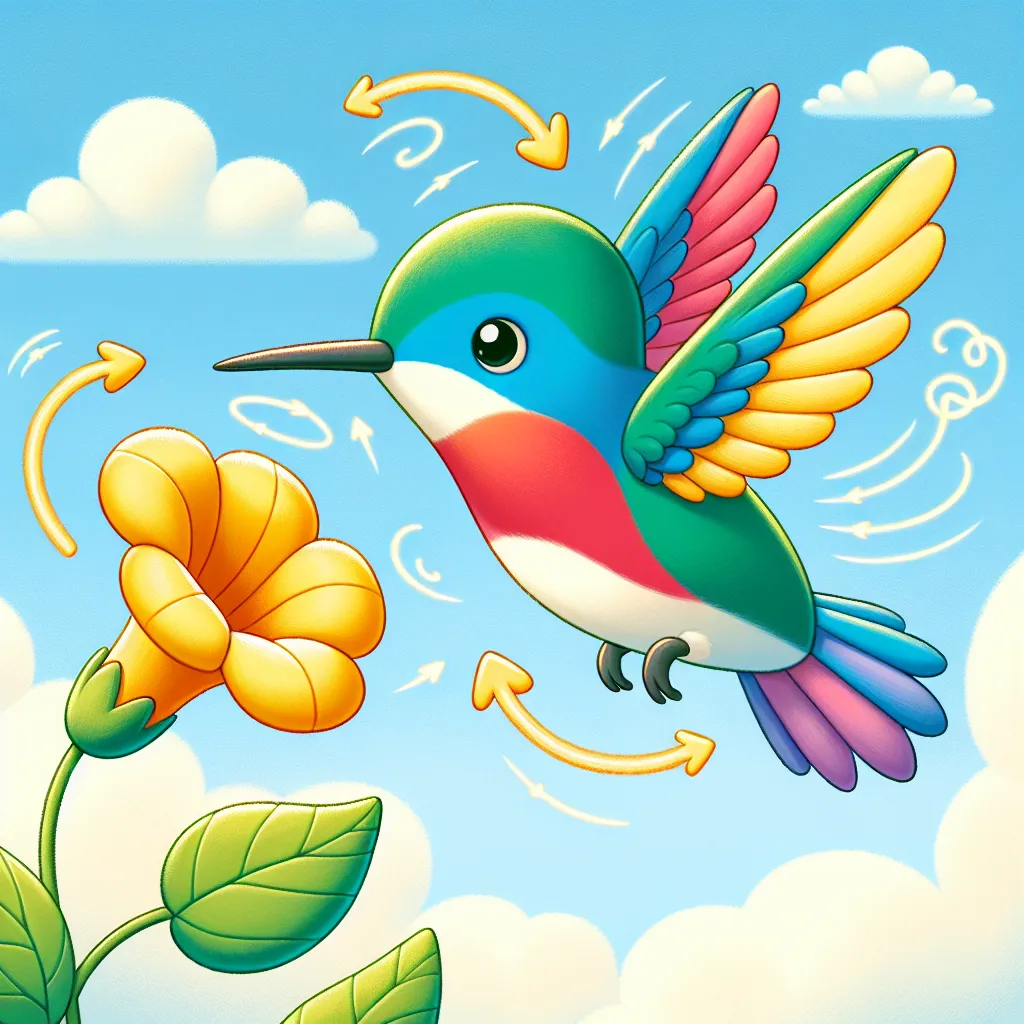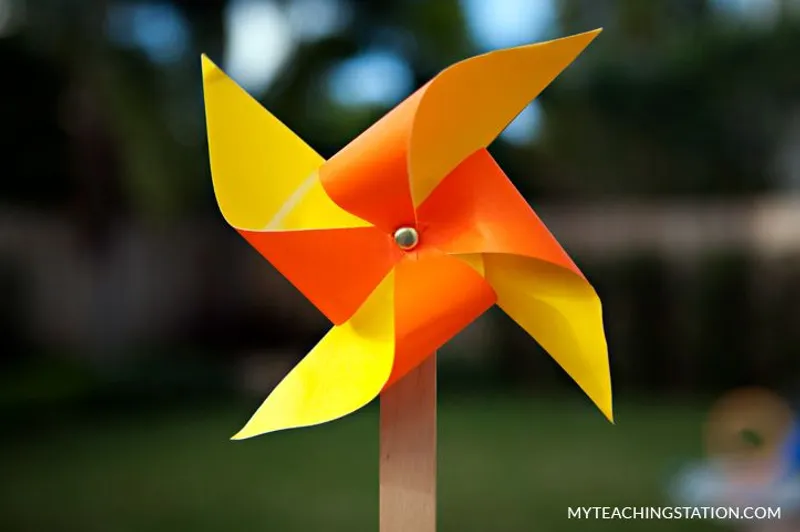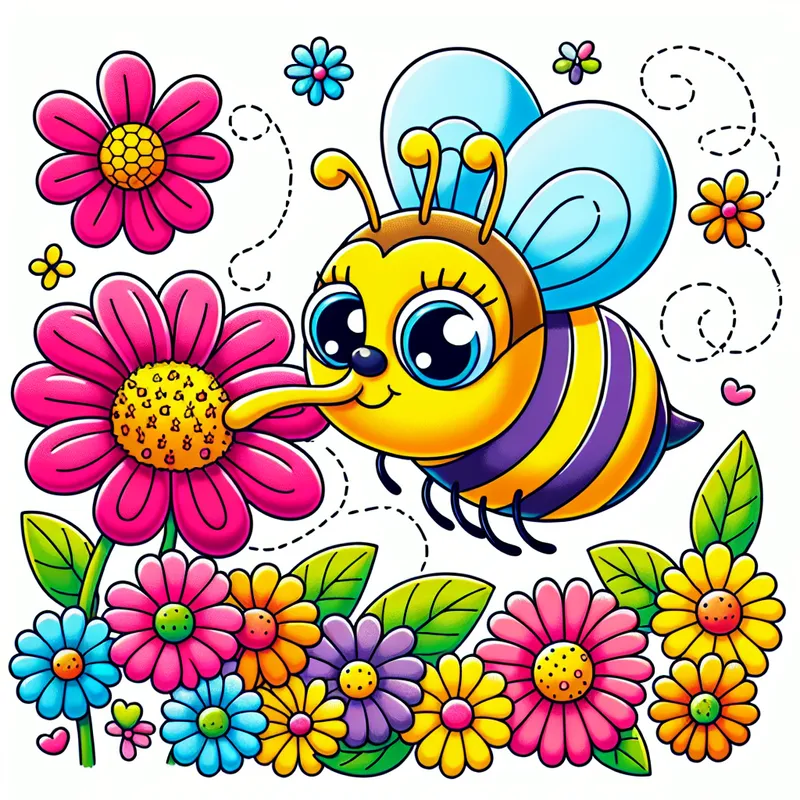Published on 07/08/2025 by James Best
Wing Wizards: How Hummingbirds Perform Their Hovering Magic!
Have You Ever Wondered How Hummingbirds Stay Still in Mid-Air?
Have you ever spotted a hummingbird floating perfectly still in the air, its wings nothing but a blur? It’s like they’ve mastered a superpower that even our most advanced aircraft struggle to copy! These tiny birds—some no bigger than your thumb—can hover in one spot, fly backwards, upside down, and even upside down backwards! 🐦
While other birds need to keep moving forward to stay in the air (just like aeroplanes), hummingbirds can pause mid-flight to sip nectar from flowers. It’s as if they’ve got invisible strings holding them in place! But there aren’t any strings—just some incredibly clever wing movements and special bird design. Let’s discover how these feathered helicopters perform their amazing aerial tricks!

The Big Idea: Supercharged Wings and Special Muscles
Hummingbirds are the only birds that can truly hover for long periods. Their secret? Wings that move in a completely different way from other birds! While most birds flap their wings up and down (like you’d clap your hands), hummingbirds move their wings in a figure-eight pattern—almost like they’re drawing tiny infinity symbols in the air.
Here are some fascinating facts about these hovering heroes:
- Hummingbirds can beat their wings up to 80 times per second! That’s so fast that our eyes can’t even see the individual flaps—we just see a blur.
- If you could slow down time, you’d see that hummingbirds generate lift (the force that keeps them up) on both the forward AND backward wing strokes. Other birds only create lift on the downstroke.
- Their wing joints are special too—they can rotate their wings in almost any direction, like having shoulders that can twist all the way around!
- The smallest hummingbird, the bee hummingbird, weighs less than a 2p coin!
- Their hearts can beat over 1,200 times per minute during flight—that’s 20 times per second!
- To fuel all this movement, hummingbirds must eat more than their body weight in nectar every day. Imagine if you had to eat 40-50 plates of food daily!
Did You Know?
- Hummingbirds have the largest brain-to-body mass ratio of any bird—about 4.2% of their body weight is brain!
- These tiny birds can remember every flower they’ve visited and how long it will take for that flower to refill with nectar.
- Some hummingbirds migrate over 3,000 miles twice a year—that’s like you walking from London to Turkey and back!
Science Spotlight: High-Speed Photography Reveals the Secrets
Scientists couldn’t fully understand how hummingbirds hovered until the invention of high-speed photography. In the 1940s and 1950s, Harold Edgerton, an electrical engineer at MIT, developed flash photography techniques that could capture images at 1/100,000th of a second.
His work allowed researchers to finally see exactly how hummingbird wings moved during hovering. Today, scientists use even more advanced cameras that can record more than 10,000 frames per second to study these birds’ flight mechanics. This technology has helped engineers design better drones and flying robots that can hover more efficiently—especially important for rescue missions in difficult terrain or for monitoring wildlife in delicate ecosystems without disturbing them.
Hands-On Discovery: Make Your Own Hovering Hummingbird!
Let’s create a simple model that demonstrates how hummingbirds generate lift with their special wing movements.
What You’ll Need:
- A piece of stiff paper or thin cardboard
- Scissors (ask an adult to help with cutting)
- Coloured pencils or markers
- String or thread (about 30 cm)
- A small paperclip
- A drinking straw
Safety First:
- Ask an adult to help with scissors
- Be careful not to poke yourself with the paperclip
Steps:
- Draw a simple hummingbird shape on your cardboard (about 10 cm long). Make sure to include wings that stick out to the sides.
- Colour your hummingbird however you like—many hummingbirds have bright, iridescent feathers!
- Carefully cut out your hummingbird.
- Bend the wings slightly upward from the body.
- Attach the paperclip to the bottom of your hummingbird (this adds weight to keep it balanced).
- Tie one end of the string to the middle of your hummingbird’s back.
- Thread the other end of the string through the straw.
- Hold the straw upright with one hand and gently pull the string up and down with your other hand.
What’s Happening:
As you move the string, your hummingbird should “hover” in place! The slight upward bend in the wings creates lift when air moves over them—similar to how real hummingbird wings generate lift. The paperclip helps balance your bird so it stays level instead of spinning around.
The Science Behind It:
Real hummingbirds create lift through a principle called “dynamic lift.” Their wings move in a figure-eight pattern, changing angles throughout each stroke to push air downward. According to Newton’s Third Law (for every action, there’s an equal and opposite reaction), when the wings push air down, the bird gets pushed up!
Our paper model is much simpler, but it demonstrates how shaped surfaces (the bent wings) interact with air to create lifting forces. Real hummingbirds are much more efficient—they’ve evolved special muscles and bones that allow them to flap their wings with incredible speed and precision.
Fun Facts and Mind-Bogglers
- A hummingbird’s wings beat so fast that they make a humming sound—that’s how they got their name!
- If a hummingbird were the size of a human, it would need to consume energy equivalent to 155,000 calories per day. That’s like eating over 300 large chocolate bars!
- During cold nights, hummingbirds can enter a state called “torpor” where their metabolism slows down by 95% and their body temperature drops by over 20°C. It’s like they have a built-in power-saving mode!
- Hummingbirds can fly at speeds up to 98 kilometres per hour during courtship dives—that’s faster than cars are allowed to drive in most towns!
Explorer’s Challenge
Ready to become a hummingbird scientist? Try these activities:
-
Nectar Detective: Make a simple sugar-water solution (ask an adult to help mix 1 part sugar with 4 parts water) and put it in a red container outside. Observe if any hummingbirds visit. How long do they stay? How often do they return?
-
Wing Speed Calculator: Find a hummingbird video online and play it in slow motion. Can you count how many wing beats happen in one second?
-
Design Challenge: Can you design a better hummingbird feeder? Draw your ideas and think about:
- How will hummingbirds find it easily?
- How will it keep the nectar clean?
- How can you make it difficult for other animals to steal the nectar?
-
Question Explorer: Why do you think hummingbirds are so small? What advantages might their tiny size give them? What challenges might it create?
The Big Question
Hummingbirds have solved the problem of hovering in a way that even our best engineers are still trying to copy. Their
Written by James Best
← Back to blog





